

Din yndlingsmusik kan helbrede dig. The Stress Reservoir. Christopher Alexander, The Phenomenon of Life, pages 376 – 378: “We shall understand the negative effect of environment on human freedom more deeply by considering the phenomenon of stress.
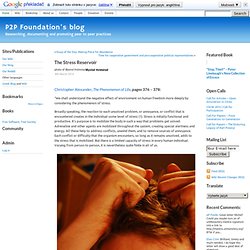
Broadly speaking, the reaction to each unsolved problem, or annoyance, or conflict that is encountered creates in the individual some level of stress (1). Stress is initially functional and productive. It’s purpose is to mobilize the body in such a way that problems get solved. Adrenaline and other agents are mobilized throughout the system, creating special alertness and energy. There is, in effect, a stress reservoir in the body. Perhaps the most important finding of modern research on stress is that stress is cumulative, because it is all in one currency. To see more exactly how the accumulation of stress, and disruption of the healthy relation between living structures in the environment and human freedom works, look at the case of a wall outside the University Art Museum in Berkeley, California. Ben Goldacre: What doctors don't know about the drugs they prescribe. 5 Ridiculous Myths About Cow’s Milk. Despite its pure, innocent, and creamy exterior, milk has a much darker side and one that the dairy industry doesn’t want you finding out about.
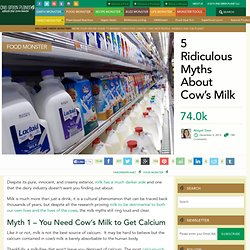
Milk is much more than just a drink, it is a cultural phenomenon that can be traced back thousands of years, but despite all the research proving milk to be detrimental to both our own lives and the lives of the cows, the milk myths still ring loud and clear. Myth 1 – You Need Cow’s Milk to Get Calcium Like it or not, milk is not the best source of calcium. It may be hard to believe but the calcium contained in cow’s milk is barely absorbable to the human body. Thankfully, a milk-free diet won’t leave you deprived of calcium. Myth 2 – Cow’s Milk Will Give You Strong Bones Much along the same lines as we need cow’s milk to get calcium, we are also told that cow’s milk is how we get nice, strong, and healthy bones. Myth 3 – Cow’s Milk Isn’t Cruel No amount of cute celebrities sporting milk moustaches can hide from the ugly side of the dairy industry. Lægeforeningen: Læger har ingen chance for at vide, hvordan en medicincocktail virker. Så meget medicin spiser vi Hver dansker købte i gennemsnit 10 pakker receptpligtig medicin og tre pakker håndkøbsmedicin på apoteket i 2011.
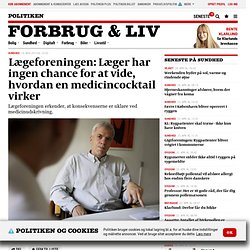
Det vil sige, at vi i alt købte 58,3 millioner pakker medicin på recept og knap 18 millioner pakker medicin i håndkøb. Hertil kommer den medicin, der blev udleveret på hospitalerne eller solgt i kiosker og supermarkeder med håndkøbsudsalg. Det drejer sig om fem procent af al medicin. Kvinder køber flere lægemidler end mænd, og ældre køber klart mere medicin end unge. 700.000 danskere bruger mere end fem forskellige lægemidler på en gang og er dermed særligt udsatte for lægemiddelproblemer. Ud af dem anvender 40 procent et eller flere præparater, der faktisk kan være uhensigtsmæssige for deres behandling, viser en analyse fra Danmarks Apotekerforening fra april 2013. Kilde: Danmarks Apotekerforening. Open mHealth - Home. mHealth.
Nurse using a mobile phone in Accra, Ghana mHealth (also written as m-health) is an abbreviation for mobile health, a term used for the practice of medicine and public health supported by mobile devices.
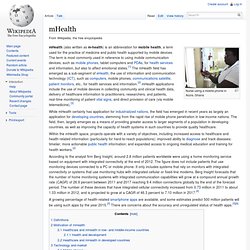
The term is most commonly used in reference to using mobile communication devices, such as mobile phones, tablet computers and PDAs, for health services and information, but also to affect emotional states.[1] The mHealth field has emerged as a sub-segment of eHealth, the use of information and communication technology (ICT), such as computers, mobile phones, communications satellite, patient monitors, etc., for health services and information.[2] mHealth applications include the use of mobile devices in collecting community and clinical health data, delivery of healthcare information to practitioners, researchers, and patients, real-time monitoring of patient vital signs, and direct provision of care (via mobile telemedicine).[3]
eHealth. eHealth (also written e-health) is a relatively recent term for healthcare practice supported by electronic processes and communication, dating back to at least 1999.[1] Usage of the term varies: some would argue it is interchangeable with health informatics with a broad definition covering electronic/digital processes in health[2] while others use it in the narrower sense of healthcare practice using the Internet.[3][4][5] It can also include health applications and links on mobile phones, referred to as m-health or mHealth.
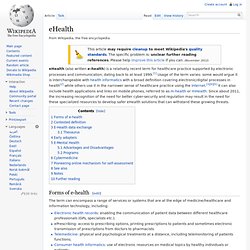
Since about 2011, the increasing recognition of the need for better cyber-security and regulation may result in the need for these specialized resources to develop safer eHealth solutions that can withstand these growing threats. Forms of e-health[edit] The term can encompass a range of services or systems that are at the edge of medicine/healthcare and information technology, including: Contested definition[edit] E-Health data exchange[edit] Thesaurus[edit] Notes[edit]